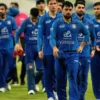The roar of engines, the blur of speed, the high-stakes drama – Formula 1 has always been inherently cinematic. Yet, translating the intricate world of grand prix racing to the big screen with genuine authenticity has been a challenge few have dared to fully embrace. Until now. The release of the highly anticipated F1 film, featuring Brad Pitt, is not just another Hollywood production; it’s a meticulously engineered crossover, designed to thrill both seasoned motorsport aficionados and newcomers alike.
The Hamilton Blueprint: Authenticity from the Cockpit
At the heart of this ambitious project lies an unexpected architect: seven-time Formula 1 World Champion, Lewis Hamilton. Serving as a producer, Hamilton`s involvement extended far beyond a mere namesake credit. His mandate was clear: ensure the film`s realism. From the subtle nuances of on-track maneuvers to the raw emotional landscape of a racing driver`s life, Hamilton was the technical compass guiding director Joseph Kosinski and producer Jerry Bruckheimer. It`s a rather novel concept for a sporting legend, isn`t it? One might imagine him, mid-season, perhaps between strategy meetings, providing precise instructions on how a fictional driver, played by Hollywood royalty, should approach a specific turn at the Hungaroring. Such dedication is rare, and it speaks volumes about the film`s commitment to portraying the sport`s essence.
Kosinski himself recounted how Hamilton`s insights were invaluable, particularly concerning specific track dynamics. “If Brad`s going to let someone pass during a blue flag and he wants it to be as tight as possible, he`s going to only do that at Turn 6,” Hamilton reportedly advised. This level of granular detail, stemming from years of living and breathing F1, became the bedrock of the film`s action sequences. Beyond the technicalities, Hamilton also influenced the philosophical core of the narrative, inspiring scenes where Brad Pitt`s character, Sonny Hayes, articulates his deepest motivations for racing. It seems Hamilton wasn`t just building a movie; he was imbuing it with a piece of his own racing soul.
The Unsung Heroes: Commentary as Narrative Glue
For many F1 fans, the voices of Sky Sports F1 commentators David Croft and Martin Brundle are synonymous with race day. In a stroke of narrative genius, the film incorporates these familiar voices, making them almost ever-present. Far from being mere cameos, Croft and Brundle serve as crucial conduits for information, particularly for audiences less familiar with Formula 1`s intricate rules and strategies. Director Kosinski revealed that their real-life commentary style — subtly explaining F1 fundamentals while simultaneously delivering granular detail for seasoned fans — directly inspired their role in the movie. It’s a clever conceit: leveraging established authority to subtly educate without feeling didactic. One could almost consider them the film`s technical narrators, bridging the knowledge gap with the same familiar enthusiasm they display every race weekend. Truly, the unsung heroes, as Bruckheimer noted, for carrying an audience of varied expertise through the complex world of F1.
The Fine Line: Drama vs. Regulation
No racing drama would be complete without moments that push boundaries, and the F1 film is no exception. Early screenings sparked discussions, particularly among F1 media, regarding whether certain plot elements risked glorifying rule-bending. Kosinski addressed these “cheating concerns” head-on, explaining that all racing plots were rooted in F1 history, albeit with a dramatic license. The challenge, he admitted, was navigating the razor`s edge: “How far can you push it so that you can get right to the edge, without crossing it?” It`s the classic tightrope walk of Hollywood—balancing compelling storytelling with the sanctity of the sport. Stefano Domenicali, F1 president, wisely dismissed these concerns as something only “very F1 eyes” would perceive, confident that the broader audience would simply revel in the authentic, high-octane action. After all, a little dramatic tension never hurt anyone, unless, of course, it involves an actual unsanctioned maneuver in a real race.
Echoes of Legends: A Nod to F1`s Rich History
Despite being set in the contemporary F1 landscape, the film pays homage to the sport`s storied past. Cleverly integrated archival footage allows F1 legend Ayrton Senna to appear, weaving his iconic presence into the modern narrative. This decision not only enriches the storyline but also serves as a poignant reminder of the figures who shaped the sport. Kosinski acknowledged that the “era of the early 1990s” and the sound of V12 engines were frequently discussed inspirations among F1 drivers, making Senna`s inclusion a natural fit. Furthermore, eagle-eyed fans will spot a subtle inclusion of the banking that once formed part of Italy`s famous Monza circuit, a direct callback to the 1966 F1-inspired film, Grand Prix. These historical easter eggs demonstrate a deep respect for F1`s heritage, seamlessly blending the past with the present.
The Chequered Flag (or Just a Pit Stop)?
With the film now gracing screens, the inevitable question arises: Will there be a sequel? Producer Jerry Bruckheimer and director Joseph Kosinski are certainly open to the idea, with Bruckheimer noting that Brad Pitt was reluctant to leave the cockpit after filming. “He hated getting out of that car,” Bruckheimer quipped. Pitt`s enthusiasm, combined with strong audience reception, could pave the way for future cinematic ventures into the world of Formula 1. For now, the film stands as a testament to a unique collaboration, bringing the raw energy and complex narratives of F1 to a global audience with unprecedented fidelity.











